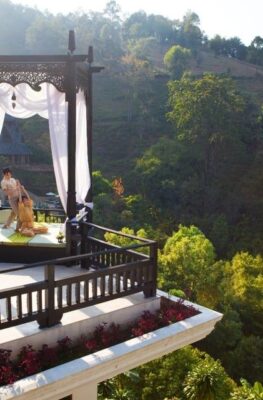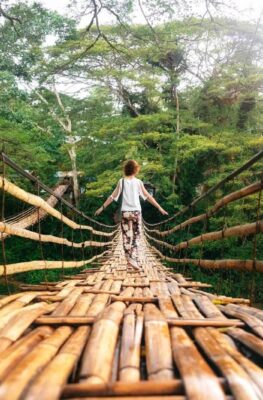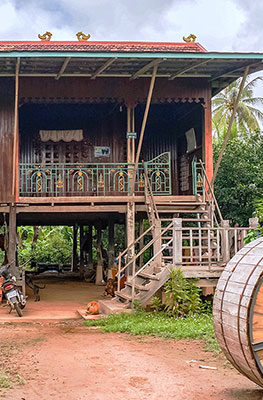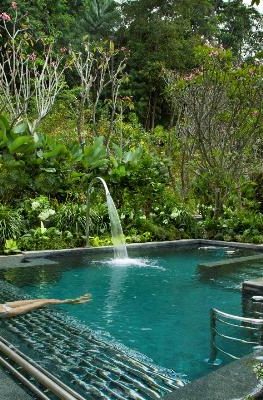Published on September 8, 2017
The wide open spaces of Southeast Asia get plenty of press – but trust us, its mysterious caves are worth writing home about, too!
Southeast Asia’s caves are located further out of the way, and require a little more preparation than any beach visit or temple trek. And thanks to the karst (limestone) landscape that predominates many of the region’s most scenic areas, ASEAN has literally hundreds of crevices, chasms, caverns, and underground rivers for an unforgettable subterranean adventure.
We talked to three travel bloggers – Carla Abanes of Just Travelling Solo; Lydia Nasso of Life Untraveled; and Mike Aquino of Tripsavvy – to get their takes on exploring Southeast Asia’s natural underground.
These travelers came back from their respective mountain hikes to tell us about the depths they descended: from the picturesque formations of the Philippines’ Sumaguing Cave to the multiplicity of Buddhas in Laos’ Pak Ou.
Caves of Ha Long Bay, Vietnam

Thien Cung Cave, Vietnam. Image © Xiquinho Silva/Creative Commons
No expedition to Ha Long Bay in Vietnam would be complete without a side trip to one of the area’s caves. Mike Aquino took a “junk” boat on a day trip around the scenic karst landscape of Ha Long – a horizon dotted with thousands of limestone outcrops, which to ancient Vietnamese looked like the arched backs of dragons.
“There’s a bustling trade in Halong Bay touring boats designed to look like Chinese junks,” Mike tells us. “The biggest island in Halong Bay, Cat Ba Island, has a hotel-resort on its beaches.”
After drifting past some oddly-shaped outcrops and a stop at a floating fish market, the junk finally made a stop at Thien Cung Cave. “Locals like to play up legends relating to ancient history within Ha Long Bay, and Thien Cung Cave is no different,” Mike chuckles. “In the cave, our guide talked about a divine marriage that took place here.”
The cave is simple enough to visit – a walkway leads from the wharf out to a staircase that then leads into the heart of the cave itself. Multicolored lights play off of the cave walls, creating a glorious play of light out of the stalactites and stalagmites’ shadows.
The kitschy legends surrounding Thien Cung can be entertaining, but should be taken with a grain of salt, Mike says. “You don’t need to hear these ‘legends’ to enjoy the beautiful interior of Thien Cung Cave,” Mike says, referring to an artificial fountain played up as a “spring” where a goddess once bathed her children. “The lights and the formations are just amazing on their own.”
Seeing the dragon-like landscape of Ha Long Bay is one of Southeast Asia’s top 50 experiences. For other tours that center on this scenic Vietnam destination, take this 8-day, 7-night tour that visits lakes, beaches and seashores around Southeast Asia, or this 12-day voyage that connects Vietnam and Cambodia’s top spots.
Sumaguing Cave explorers, Philippines. Image © jaya/Creative Commons
Sumaguing Cave, Philippines
Sumaguing Cave is a little more difficult to enter, but despite its challenges it remains one of the Philippines town of Sagada’s top draws. “I think no trip to Sagada is ever complete without doing cave exploration in Sumaguing, so there I was moving my butt from rock to rock,” laughs Carla Abanes.
Visitors to Sagada, a town nestled amidst the heights of the Philippines’ Mountain Province north of Manila, can take half a day to explore Sumaguing Cave.
“We spent six hours – an hour to reach the cave opening, four hours to explore Sumaguing cave, and another hour spent to walk back to the city center from Lumiang cave, our exit point,” Carla recalls.
Sumaguing Cave’s formations are so far untouched by human alterations – everything you see inside is the work of millions of years of nature running its course. “The rock formations inside were ah-mazing!” Carla gushes. “It was like a work of art of a supreme artist. A thousand-year old work of art!”
The lack of walkways and lights means getting in and out can be a little difficult for beginners. “What gear do you need to explore Sumaguing Cave? Your two bare hands!” Carla tells us. “You will wade through waist-deep stone-cold water, spelunk a couple of times, squeeze yourself between giant boulders, crawl using your butt, climb, and swing on a rope like Tarzan.”
To ensure a safe journey to Sumaguing Cave, Carla recommends a few key rules.
“Always always, listen to your guide,” she says. “They know the cave best. Always follow safety rules and their instructions. Also forget about bringing too much stuff inside the cave.
“Another important thing here is follow a buddy system. Never explore the cave alone. Always explore in groups and let someone know of your activity.
“Dress appropriately. Dry fit clothing is best, so it dries faster when you get wet with water or start sweating.
“It would be great if you can bring a head lamp. Funny thing, I had prepared to bring a head lamp but forgot about bring it that afternoon! Flashlight is no use, because you will need your 2 hands to be free to grip and hang on for dear life.”
The Banaue Rice Terraces (a short drive away from Sagada) should be on your Philippines bucket list – it’s one of ASEAN’s top 50 experiences.

Interior of Pak Ou Cave, Laos. Image © shankar s./Creative Commons
Pak Ou Cave, Laos
You don’t have to be a hardcore spelunker to explore Pak Ou Cave in Laos: this cave takes on all comers with an easy-to-access look at local Buddhist devotions.
“With close to 4,000 Buddha images depicted in various serene poses carved, sculpted, molded or drawn on the limestone walls, the caves are a true testament to how prominent and important Buddhism is in Laos,” explains Lydia Nasso. “The Pak Ou Caves are an eye-opening experience for any curious traveler wanting to witness how Laotians worship Buddha outside the context of a more traditional temple.”
Buddhist tradition holds special significance to sites with a multiplicity of Buddhas – this was once true of Angkor Wat (the statues from Angkor Wat’s Hall of a Thousand Buddhas have since been relocated to the Angkor National Museum in Siem Reap); and is presently true of the Pindaya Caves in Myanmar, another cavern with hundreds of Buddhas of all sizes.
The effect of the cool interior, crammed end-to-end with Buddha images, can be electric to the first-time visitor. “As soon as I saw but a glimpse of the Pak Ou caves from across the Nam Ou River, I knew it would be a special place unique to Laos,” Lydia recalls. “As I took my first steps up the dimly-lit cave, I immediately felt a sacred calmness come over me.”
The Pak Ou Caves are a popular bucket-list destination for anyone visiting the cultural town of Luang Prabang in Laos. Located about 35 km from the town center, Lydia calls Pak Ou “a perfect day trip to add to your to-do list,” she says. “The site isn’t very big so half a day including traveling time is sufficient.”
The site is accessible by motorbike – but it’s less risky and more scenic to book a cruise from Luang Prabang down the Nam Ou River, where one can disembark and explore the cave at leisure. “The cruise starts in Luang Prabang and takes about 2 hours to get to the caves,” Lydia tells us.
- For a larger itinerary that covers the Pak Ou Cave and more besides, take this epic, 3-country, 21-day/20-night trip from Yangon in Myanmar to Luang Prabang, Laos.
* * * *
Keep up to date on Mike Aquino’s adventures on Tripsavvy.com, or follow his social media postings on Facebook, Twitter, and Instagram.
Carla Abanes blogs at her site Just Travelling Solo, and does social media on the following profiles: Twitter, Facebook, and Instagram.
You’ll find Lydia Nasso posting about her travels on her official site Life Untraveled – she also posts social media updates on Instagram, Facebook and Pinterest.






